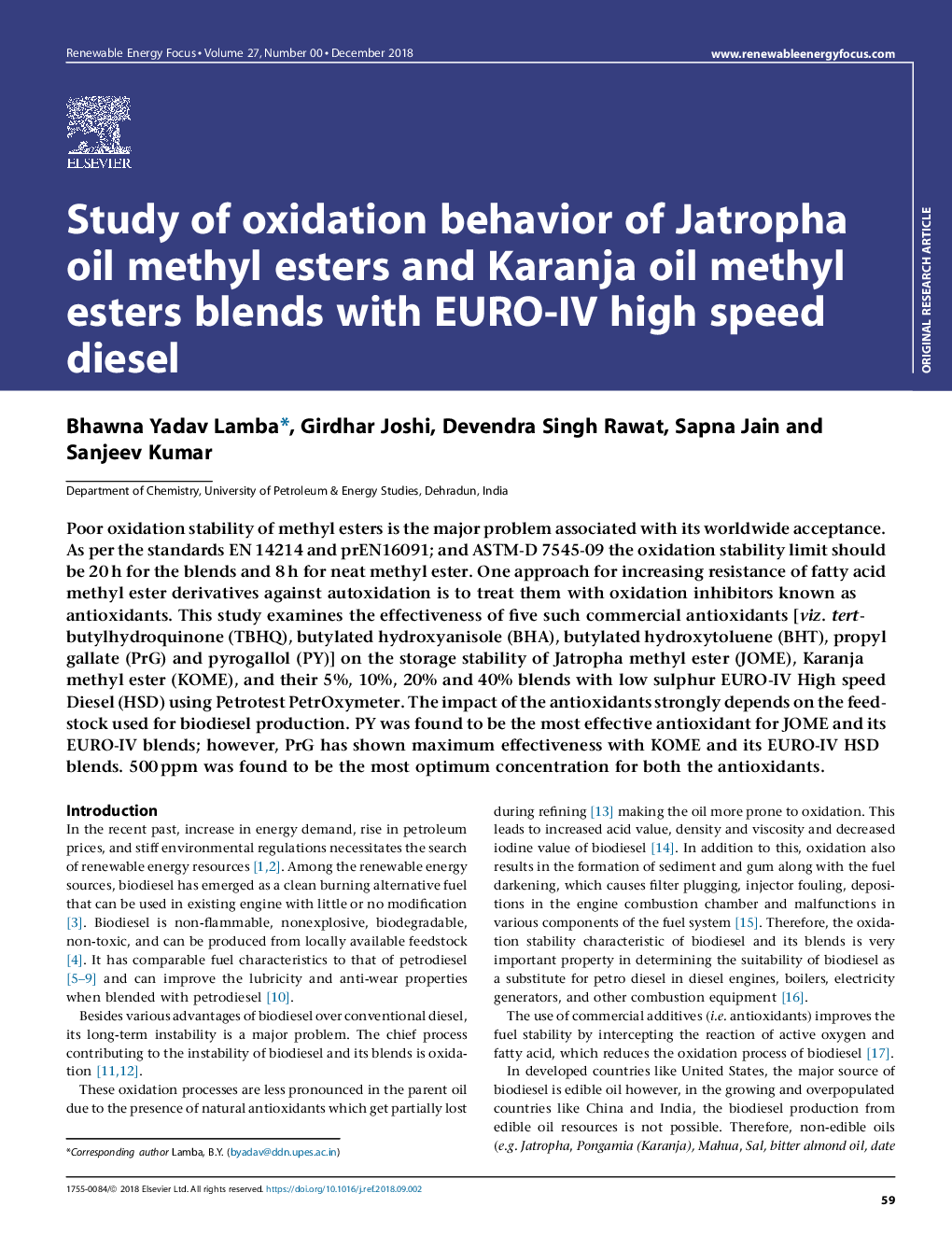| Article ID | Journal | Published Year | Pages | File Type |
|---|---|---|---|---|
| 11029488 | Renewable Energy Focus | 2018 | 8 Pages |
Abstract
Poor oxidation stability of methyl esters is the major problem associated with its worldwide acceptance. As per the standards EN 14214 and prEN16091; and ASTM-D 7545-09 the oxidation stability limit should be 20âh for the blends and 8âh for neat methyl ester. One approach for increasing resistance of fatty acid methyl ester derivatives against autoxidation is to treat them with oxidation inhibitors known as antioxidants. This study examines the effectiveness of five such commercial antioxidants [viz. tert-butylhydroquinone (TBHQ), butylated hydroxyanisole (BHA), butylated hydroxytoluene (BHT), propyl gallate (PrG) and pyrogallol (PY)] on the storage stability of Jatropha methyl ester (JOME), Karanja methyl ester (KOME), and their 5%, 10%, 20% and 40% blends with low sulphur EURO-IV High speed Diesel (HSD) using Petrotest PetrOxymeter. The impact of the antioxidants strongly depends on the feed-stock used for biodiesel production. PY was found to be the most effective antioxidant for JOME and its EURO-IV blends; however, PrG has shown maximum effectiveness with KOME and its EURO-IV HSD blends. 500âppm was found to be the most optimum concentration for both the antioxidants.
Related Topics
Physical Sciences and Engineering
Energy
Renewable Energy, Sustainability and the Environment
Authors
Bhawna Yadav Lamba, Girdhar Joshi, Devendra Singh Rawat, Sapna Jain, Sanjeev Kumar,
